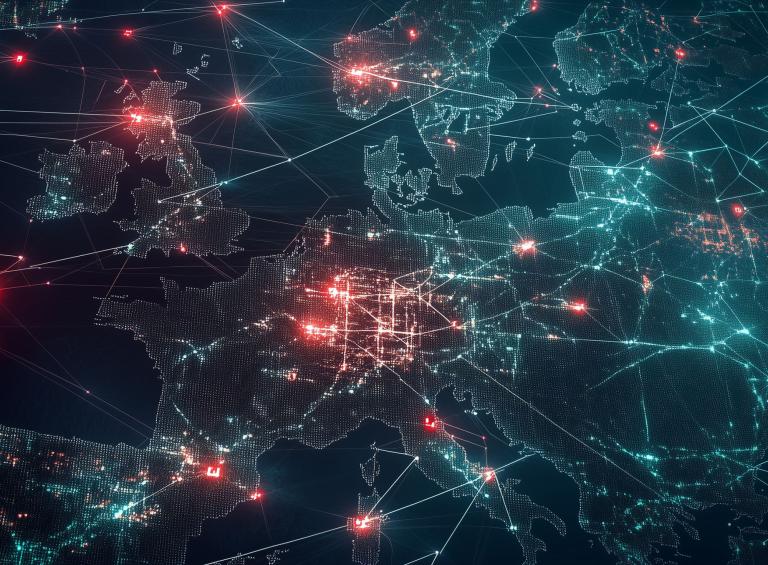

First-Place Winner in 2025 The Cyber Edge Writing Award.
Introduction
In 2022, amidst the ongoing Russo-Ukrainian conflict, one of the largest cyber attacks fell upon Kyivstar, the largest telecommunications provider in Ukraine, leaving millions without mobile and internet services. This attack underlined the vulnerability of national infrastructure but also served as a chilling reminder of how cyber warfare can be leveraged in geopolitical disputes. Kyivstar provides services to some 24 million subscribers; its disruption would thus constitute a critical blow to civilian communications and those military operations dependent on secure and reliable networks.
Threats Identified
Scale of Impact: The result of the cyber attack in Kyivstar was widely disruptive, with no services on voice calls, SMS and internet connectivity for hours that affected daily life and emergency responses. For example, public transportation in Kyiv, dependent upon mobile connectivity to pay tickets and schedule current time en masse, had been cast into chaos. Hospitals were cut off from important services that used mobile phone networks for their communications. This incident has shown how cyber attacks can bring a nation to its knees—from disrupting economic activities to affecting national security.
Attack Methodology: Cybersecurity experts believe the attack on Kyivstar is the work of an APT group, possibly sponsored by Russian state actors, due to their advanced cyber capabilities. The attack likely consisted of phishing, malware deployment and exploitation of network software vulnerabilities. A similar trick was used in the 2017 NotPetya attack, where Russian hackers targeted accounting software used by Ukrainian businesses with devastating global consequences. The Kyivstar breach could have been initiated with stolen employee credentials or zero-day exploits, which would showcase the careful planning and execution so typical of state-sponsored cyber operations.
Psychological Warfare: The attack has attempted to instill a sense of panic and confusion in the minds of the Ukrainian masses, rather than merely creating physical disruption. Along with destroying communications, they had planned to disrupt communication systems so that the warnings and military orders by the government could not reach the ordinary citizen and the military officials, making them both more disheartened. A similar pattern came up during the 2022 Viasat hack. At the outset of the invasion, Russian hackers knocked thousands of modems offline in an effort to bring Ukrainian military communications to a grinding halt.
Novel Solutions
A. Emerging Technologies
Artificial intelligence (AI) and machine learning are transforming cyber defense, from real-time detection and response to network traffic anomalies. Cognitive systems can also warn in real time of, or block, any abnormal activity indicative of early breaches. Quantum cryptography, or quantum key distribution (QKD), provides an unbreakable solution to secure communications in conflict zones like Ukraine; thus, even on those network layers that could be breached, intercepts would be impossible. This technology has yet to be tested in the satellite communications of China, showing its potential in realistic applications. Blockchain technology can create an immutable record of network activity and data in transit, key to providing secure data and an immutable record for post-incident analysis in case of a cyber attack. Estonia’s use of blockchain for government records may be the model for blockchain use in telecom data security. These advancements show that AI has great potential to enhance QKD in quantum internet, and Blockchain in offering cyber defense against data integrity.
B. Training and Human Factors
Kyivstar should implement education in cybersecurity continuously, introducing educationally enlightened programs and making compulsory training on phishing email identification among employees. With such educative programs, for example, the one IBM uses with phishing simulation, the rate of an attack can be significantly lowered. Second, Kyivstar should run periodic exercises with a red team acting as an attacker to test defenses. Such is the approach used by the United States. The real-world security enhancements in the Department of Defense ensure that both the technological and human elements in its organization are ready against sophisticated cyber threats. Periodic testing of systems and protocols will help Kyivstar ensure that its cybersecurity measures are effective.
C. Tactics, Technique and Procedures
The mitigation of the Kyivstar attack will be improved with a zero-trust architecture. This is a strict approach to user authentication, including their devices for resource access. This approach, like Google’s zero trust, locks out unauthorized access in case the first line of defense has been compromised. A well-prepared incident response strategy will involve identification, containment, eradication, recovery and post-incident activity. Kyivstar should have detailed plans that include rapid identification, containment, eradication, recovery and post-incident analysis. The response of Maersk to the NotPetya attack in 2017 showed how swift isolation of affected systems and using disconnected backups can limit damage and hasten the process of recovery, ensuring minimal disruption to services.
D. Policy and Regulatory Frameworks
This also creates a need for Ukraine to develop its overall legislation on cybersecurity, especially concerning critical infrastructure sectors, in a manner that will necessitate the compliance of telecoms with European regulations. Such may be made through incident reporting policies, compulsorily conducted security audits and heavy sanctions in cases of noncompliance. The government of Ukraine should make active contributions at international levels toward the conceptualization of the normative content for the phenomenon of cyber conflict. It should argue for the adoption of specific conventions along the lines of the Budapest Convention on Cybercrime. These would include norms that consider cyber attacks in the context of a conflict to be a breach of international law, put on a par with traditional hostilities. This dampens the tendency of probable aggressors and secures a world response against new threats. Ukraine’s involvement in forming these norms will contribute much to holding back the probable aggressors and making the response to emerging threats possible globally.
E. Partnerships
The attack on Kyivstar underlines the requirement for closer cooperation between government agencies and private sector players, possibly resulting in real-time threat intelligence sharing, something similar to the Cyber Threat Alliance in the United States. For example, Kyivstar is expected to receive regular briefings from entities like the Ukrainian State Service of Special Communications and Information Protection regarding emerging threats. Otherwise, Ukraine can also be in a position to join or even lead international cybersecurity alliances, something like the Five Eyes, through which resources, knowledge about threats and responses against attacks can be coordinated by use of agreements of intelligence-sharing. This will enable Kyivstar to have access to global databases of threats, collaborative defense strategies and cybersecurity technologies and expertise across other allied nations.



